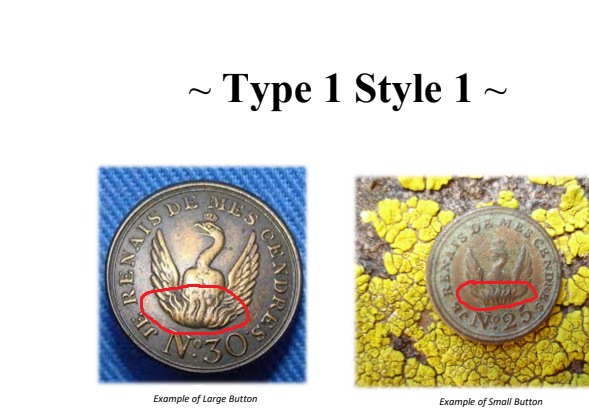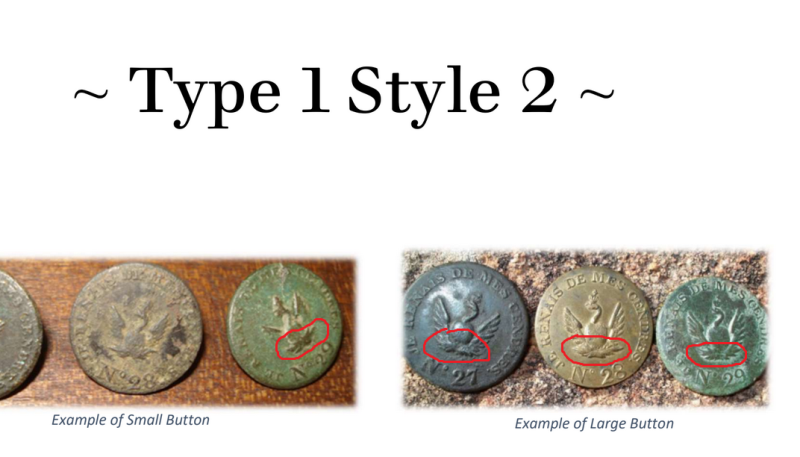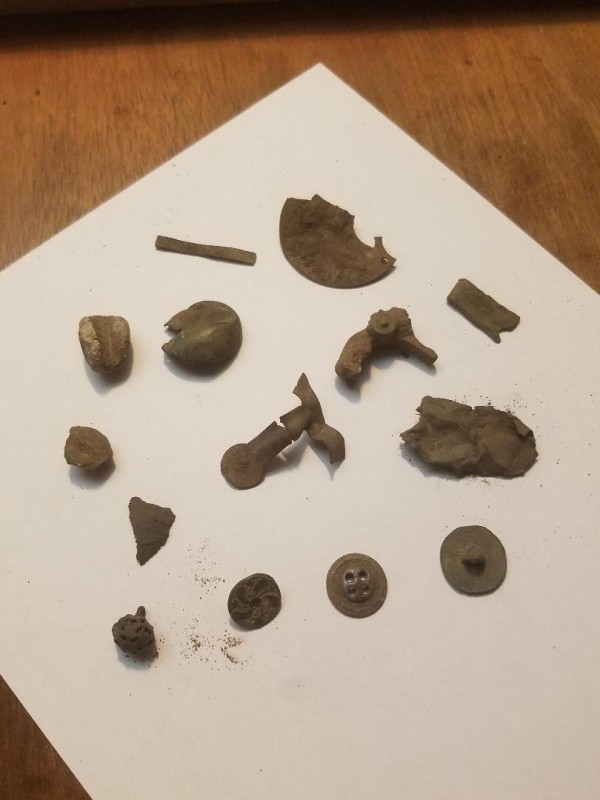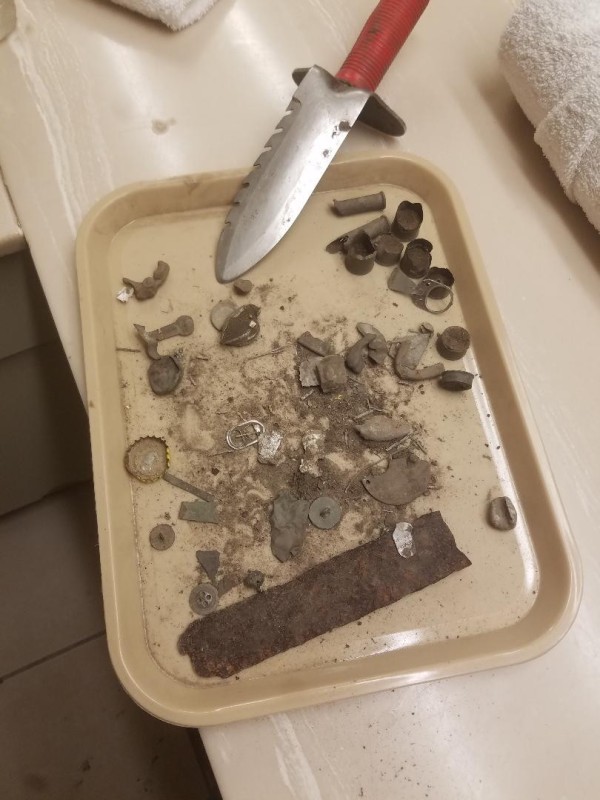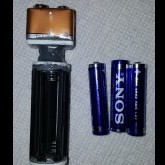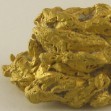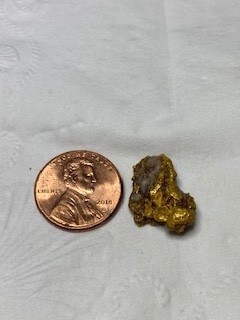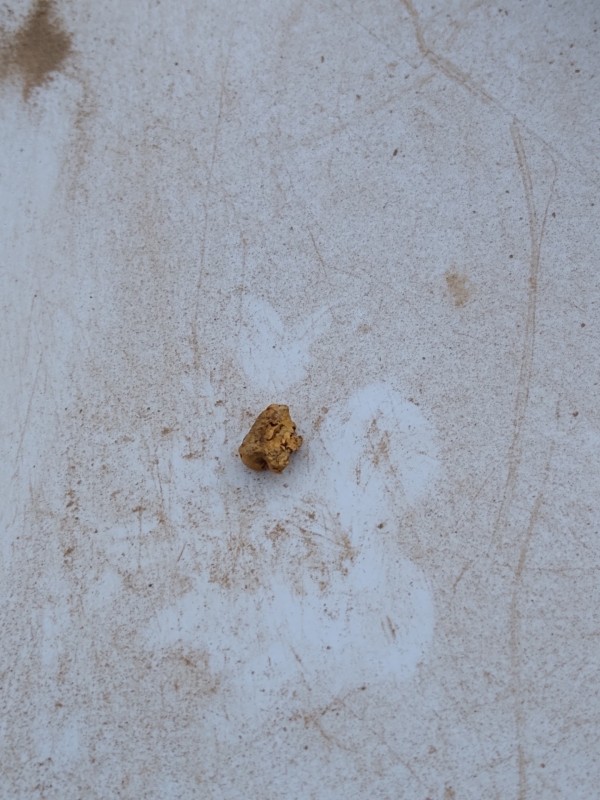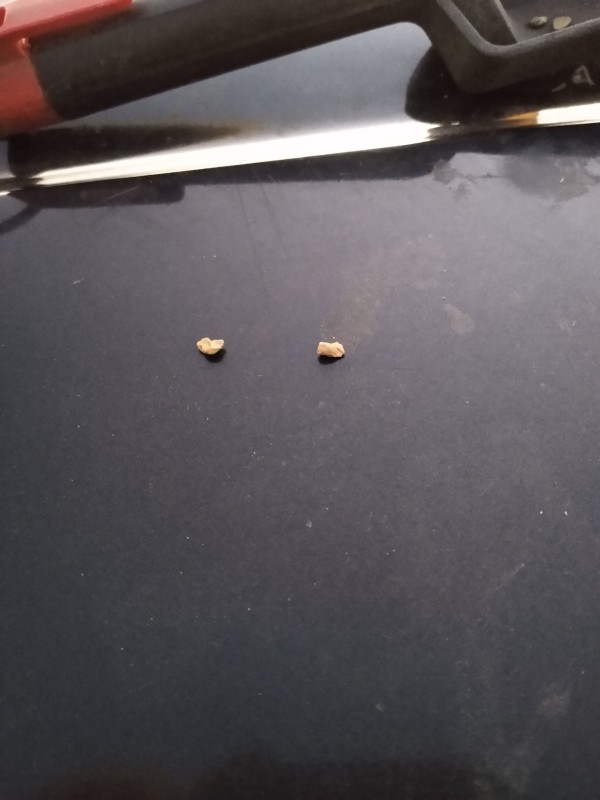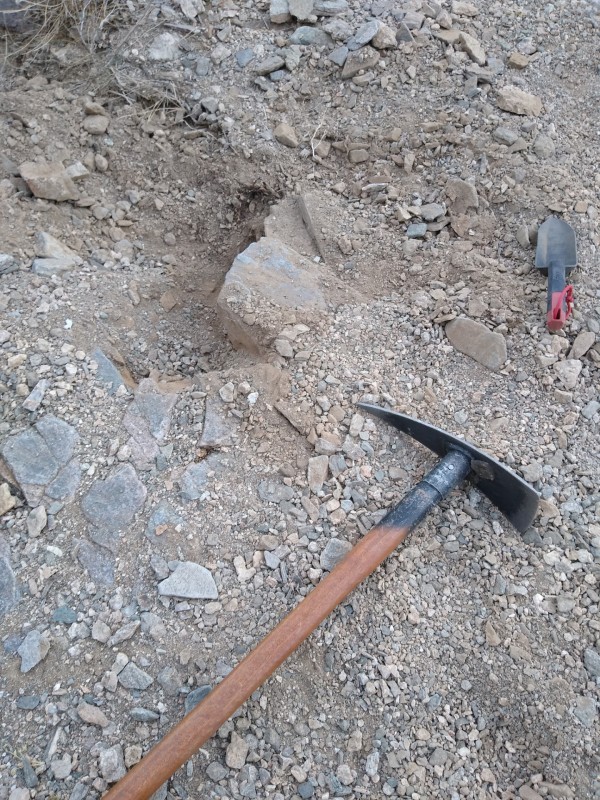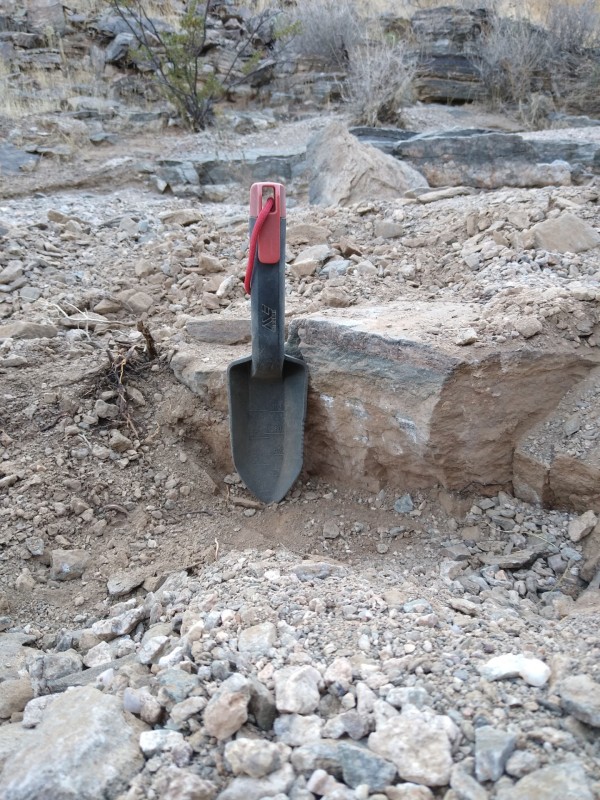Leaderboard
Popular Content
Showing content with the highest reputation on 12/23/2021 in all areas
-
Pics are of 4 different 1 pound rocks with gold throughout. I guess technically they could be classified as Specimens if you must. Anyway, What's so interesting is, the 4 different rocks of gold were all recovered with 4 different detectors. Another interesting aspect is, the fact that these 4 different nuggets from 4 different detectors were found in 4 different states (AK, OR, ID, NV). Now for the most intriguing bit of information about the 4, all found with VLF detectors. That's part of the reason I still recommend gold nugget hunters to make sure they always have a VLF detector to compliment their big dog super deep power monster PI or ZED. If you are going to travel and detect a variety of terrains and areas of gold you need to have more than 1 tool. Sometimes DEPTH from a big powerful detector is not desired and in fact can be your worst enemy. The average person can only dig so many 2 feet deep hold and just a couple 3 footers and you are exhausted. I've done it myself and witnessed many other do the same. In old minded areas trash is usually abundant and a powerful DEEP detector can be your enemy. So what's one of my secrets to the success I have had finding big gold? DISCRIMINATION Yes that nasty phrase (don't use discrimination) so many people tell you "Dig it all" and I laugh all the way to the bank. So many old mining areas still produce big gold, but the specimens are mixed in with 100 yr old miners trash and a good way to help select the fewer targets I want to pursue. Don't get me wrong in that I don't like my GPX-6000 and GPZ-7000, as I do and have found many nuggets with them. But those tools have different features I use and like in situations that the VLF detectors are not so well designed. Just imagine the day we have get the feel of an ergonomically designed GPX-6000 with GPZ-7000 depth capabilities, the size imaging from a Garrett GTI, colored frequency analyzation of the V3i, discrimination with adjustable iron masking of the Equinox and waterproofing of the Deus II. Now that detector could be the ultimate and probably cost at least $2000 if made by an American company. We won't even try to figure what Minelab would charge? Now I know there are other aspects of finding big gold and so I'm asking those others who have had the rare pleasure of digging such big pieces to chime in and give info. The moral of the story is know your tools and their strong/weak points and take advantage of them.13 points
-
Thousands of DEUS II leaving the factory this week! Despite the massive supply shortage this year we managed to be on time with our deliveries. Thanks to our foresight strategy and manufacturing being made in Toulouse, France, we are keeping control of our production and we are able to send over these new detectors this week. XP will always give its very best to serve your passion, keeping innovation as our course and moving towards 2022 with lots of new projects. We would like to thank all XP users around the world and wish you all a merry Christmas and a happy new year 2022! 🎉12 points
-
Returned to the new permission today, it got up in the 50s so it was pretty pleasant. I went to a spot further away from the farm where I had marked some house sites. I found two of them anyway. First I hunted this field, found nothing but buck balls and some mason jar scraps. I did two diagonals across it, walked the far end, and did find a patch iron but after a bit of walking around found nothing of interest. You can see the farm off in the distance on the other side of the highway. Heading back I spotted this old house way back in the woods, I hunted around it for a while and only found a couple of aluminum buttons. I'll probably return to this place but hunting is difficult again due to the overgrowth. There is a deer stand right next to it, and a camera. I let it photograph me 😀 Got tired of tripping on stuff at that house, so I went across the highway to this one, visible from the road. When I moved here 20 years ago I remember a light on it, I passed it every day going to work just past the farm. I searched around the house, it was tough to swing in the brush but I managed to get my best find of the day near the front door on the right, for some reason this tiny house has 2 entrances. 1925 Mercury dime in pretty good shape. It was a solid 28 and only about 4" down. There are a lot of roots so it was hard to get to but my Barracuda shovel cut them nicely. I was hoping I'd find more but only got the antique clothespin in the finds photo: I went back to the place I was yesterday and dug the rest of the coins, most of them came from under the tree swing. 2 Zincolns, 10 pre-1982 memorial pennies, the oldest being a 1959 D. 5 dimes, oldest was 1971. A 1981 quarter. Some of these were multiple coin spills. The lipstick tube top has a woman standing with two children, I'm putting it in the 40s or 50s. At least I can say for sure if there is any silver under my coil I will probably find it. The Merc was pretty heavily masked.11 points
-
Got out with TomCA yesterday for some relic hunting at some early western frontier sites. I ended up going sasquach through super heavy brush in search of the goods and it didn't disappoint! It may have been an all time record for me for buttons, not only in quantity but I also ended up digging some rarities! Although not the best find of the trip, I dug a super old 1600's-1700's SILVER decorative button! I've seen these found at Colonial cellar hole sites on the east coast and over seas, but never seen one dug out here. I absolutely LOVE IT!! This heavy cast suspender buckle was a fun find as well. No idea what the back story is on it, but it appears to have an iron cross (?) on it. The prize of the trip is this No. 28 large Phoenix button, and it turns out that of the 94 various types of Phoenix buttons this particular one is one of the rarest! Tom recently did a research project to ascertain the rarity of the 94 different types of Phoenix buttons, I've linked his excellent article here: Phoenix Button Rarity All told I ended up digging at least eight period buttons, and possibly another large Phoenix button dug that's in a coin or button cookie soaking in WD40 to loosen up the crud. I dug this octagon shaped "dodad" depicting a person kneeling, possibly holding a rifle. No idea what it is, it's 3cm wide. Here's the period scrapies, green blacksmith'd copper bits, the obligatory rim-fire, etc. Any idea what the item on the far left is? I'm thinking perhaps part of a Chinese lock or something? I added another photo showing another view of it. Tom thinks it's a gun part, I still think it's some kind of Chinese lock or something similar. I haven't cleaned anything yet really, was thinking it would be fun to order a set of Andre's cleaning pencils to restore some of these items and see how they work. Hopefully TomCA will chime in with his finds. 2021 isn't over yet!! GL&HH, Cal6 points
-
6 points
-
Cal_Cobra, This is one of those topics that I normally keep silent on for fear of being chastised by the experts. lol But, oh well. 😁 I’ve used the lemon juice on some buttons that warranted it and I think it does help. But only after I’ve used a little dish soap, water and tooth brush. But the button condition is the main determining factor on what’s done to it. You’re right about cleaning some coins. A two cent piece comes to mind. I was glad I took a photo right after I dug it because what little water and tooth brushing I did on it made the date almost disappear. lol One of the guys in our club uses one of those pencils you spoke of and he really likes it. His words were “it’s my coin I’ll do with it what I want” and I recon he’s right. I made a mistake on a coin collecting site saying in a post I cleaned my coins off after I dug them. Oh my! That was a mistake. I posted a pic of a nice seated dime I found and I was bombarded with everything from there’s no way you dug that to you ruined the value completely. I’ve learned that no matter what you do as to how careful you are with a silver coin that’s been in the ground very long it has environmental damage. It’s just there so I don’t worry about any rubbing the dirt off any more cause the coins already damaged before I ever dig it. The glass doesn’t lie it’s there. I still use dish soap, water and a tooth brush mostly but again not on everything. I also soak some in mineral oil and use a tooth pic afterwards. (This doesn’t seem to remove any green off the Indians) Baking soda on silver will shine it up. lol (I wouldn’t do that on a key coin.) The one thing I’m for sure about is I don’t worry about it anymore. I clean the ones I want. I leave as much patina on others as I want. I think maybe relics are something a guy would want to make sure on before he worked them over but the coins unless you’re rubbing off details or it’s a key coin probably doesn’t matter much. Good luck! I’m sure there’ll be some good advice from some of the guys or gals here on what works best for them. HH Tom6 points
-
I was thinking which pirate joke I should post for Christmas. So here ya go........ Why don't Santas helpers require any training? They are elf taught. I took my car to the mechanics because it was making a terrible noise. He removed the Mariah Carey CD and now the car is fine. What did the thief get for stealing an Advent Calendar ??? 25 days. Why are Santas reindeer generally drenched with water? Because they are rain-deer. Why did Santa have to visit the psychologist? He had low elf esteem. Why are Christmas trees so uncoordinated when it comes to sewing? They always drop their needles. What do you get when you cross a snowman with a hungry mosquito? Frostbite What did Adam say to Eve on the night before Christmas day? It's Christmas Eve! What is the greatest gift that you can give someone for Christmas? A broken drum, you really can't beat it. Why does Santa sometimes visit the liquor store? So he can stock up on the Christmas spirit. What is the first thing that an elf learns in school? The elf-abet. Which of Santas reindeer is always sneaking off to the club to party? Dancer. Why is Santa no longer allowed to enter houses through the chimney? Carbon footprints. Why does Father Christmas have 3 gardens? So he is able to ho ho ho. Why does Darth Vader always burn his Christmas ham? He prefers it on the dark side. Why was the Christmas turkey able to cross the road? Because he wasn't a chicken. What does Mowgli listen to at Christmas time? Jungle bells. What are mexican Christmas sweaters made from? Fleece Navidad. What did all of the elves give Father Christmas after he had another successful CHristmas? A round of Santapplause. What is Santas cat called? Santa Claws. What fell down at the North Pole but didn't break? Snow. How did Yoda know what Luke Skywalker got for Christmas? He felt his presents. Why are Santas elves safe if they have an accident at work? They all have private elf care. What do you call a snowman that has a six pack stomach? The abdominal snowman. Which pop artist do the reindeer like to listen to when it isn't Christmas time? Beyon-sleigh. Which artist do the elves listen to in the off season? Elvish Prestley. What does Santa give to his elves that are not productive enough? The sack. What do most snowmen usually wear on their heads? Ice caps. What do you call a really funny Christmas joke about a duck? A Christmas quacker. How is Eminem like a Christmas Elf? He is a master at wrapping. Why is it so difficult to locate an advent calendar nowadays? Their days are numbered. Can you please stop asking for the perfect man, I was almost kidnapped 3 times by little elves today. I don't care how old I get, if I see a sign on a toy in the store that says "try me", you better believe that I am pushing those buttons !!!!! XXXXXXXXXXXXXXXXXXXXXXXXXXXXXXXXXXXXXXXXXXXXXXXXXXXXXXXXXXXXXXXXXXXXXXXXXXXXXXXXXXXXXXXXXXXXXXXXXXXXXXXXXXXX What ? You didn't see any pirate jokes ???????? Merry Christmas.:exactly::2funny:5 points
-
Local parks with the Equinox 15" coil running in Park 1. The Panama coin was on the surface right below the grass. The car was in the outfield of a ballfield, and the Firestone nozzle was in an area of a park that is now used for equine related endeavors. Any ideas about the other item that has rusting iron with the center piece that is decorative? Love being in FL this time of year vs. being in a colder climate and knowing there is a coin under the frozen layer of soil that will have to wait for the spring to extract!5 points
-
5 points
-
Alllrighty! The video is all finished and uploaded. Check it out if you have the time and need a good fix!5 points
-
I've learned the hard way that using water with any type of abrasive process (even rubbing with your fingers and water) to clean copper/bronze coins and relics is often a mistake as it tends to destroy the natural patina and you often end up with an orang'ish pitted/splotchy relic or coin. For things like buttons, I no longer use water, if there's gilt left I'll try lemon juice, but if it has crud, I'll use Naval Jelly. Has anyone tried any of the Andre Le Crayon products? Please by all means share any successful processes your found to restore your dug relics and coins 🤠4 points
-
I went on a little day trip to the Mojave Desert, California. It is within a day’s round trip from where I live but I had to get up at 3 am to get there on time and to have enough time available for prospecting. I decided to just have a little exploration trip and to check out this new area that I had in mind. The general area that I wanted to explore has a long history of lode and placer mining, mostly in the late 19th century, but mining was not been done on grand scale due to the extreme harsh weather conditions and lack of water. It is not too far away from Death Valley with temperatures easily reaching 115 deg F and above in summer (43 deg C) and way below freezing at night time in winter. I happen to like this harsh and unforgiving environment and spending time there is like being in a meditative state thinking to be in a foreign world, or like being on another planet. I selected a canyon area that I spotted on google earth that had a couple of old placer mines nearby. The geology is in this general region is characterized by tertiary sandstone, shale, conglomerate, breccia, and ancient lake deposits. However, there are also significant lava rock occurrences in form of highly mineralized volcanic tuff which makes detecting extremely challenging. This is a little depiction of the rocks you find there. Many of these rocks are screamers that neither the 6000 nor the 7000 were able to handle. What made the situation even more complicated is that these “hot rocks” were not just on the surface but also buried all the way deep. So, identifying targets of interest that were worth-wile digging was nearly impossible and many times I found hot rocks 1-2 feet deep that the detector picked up. I started with the 6000 and found my first little nugget very close to the surface, around 2 inch deep. What made this one interesting was that it was stuck on a volcanic tuff rock. This is another example of how gold flakes can be stuck to these rocks and wiping the dirt off of them before throwing them away can pay off. I run the 6000 on Auto/Normal/threshold on with the detector volume set all the way down to 1 but with the headset volume set to about 6 clicks. This actually worked remarkably well and made detecting a lot easier without losing sensitivity. I can highly recommend these settings and I believe Steve and JP have commented on this before. I also picked up a lot of tiny bird shots, another example of how sensitive the 6000 is. I then switched to the 7000/NF-Zsearch which I run in HY/Normal/Sens 15/semi-auto GB/smoothing off/volume 6/threshold 27. To my surprise, the detector was fairly stable under these conditions but the hot rocks still remained a major issue (no surprise). However, even when using these fairly hot settings I picked up way less bird shots than with the 6000. This was a striking example of how much more sensitive the 6000 is on tiny shallow surface targets. I managed to pick up 3 more flakes, all of which were extremely thin and flat. The nature of these flakes is suggestive of water wearing and major pounding force as part of the volcanic activity and alluvial mass flows. The only way to pick these up was by extremely slow swing speed and strict coil control which paid off in this difficult to detect area. Had I moved faster as part of ground scanning I would have missed them for sure. Overall, I was happy with my finds (albeit very modest) as I think this area has potential despite the challenging detecting conditions. I will definitely go back there for a more thorough and longer exploration. The landscape and general area are absolutely breathtaking! Many bad things can be said about California, but the nature is amazing and extremely divers, with the gold rich Sierra Nevada to the North and the vast gold bearing Mojave and Colorado deserts to the South, all of which are just within a 3-6 hour drive, depending on where you live. Here is the trash/gold ratio for the day Well, it doesn’t look too good for the “gold team”. But when does it ever? 😛 Wishing you all a Merry Christmas and a safe, healthy, happy and prosperous new year! GC4 points
-
4 points
-
What would all of the Garrett Apex owners like to see included in the next Garrett Apex Update? I do not work for Garrett, and I cannot say that there will be another update anytime soon, but if there is one in the works, and many of the Garrett Apex users collectively comment, perhaps the powers to be at Garrett will consider the most popular requests and incorporate some of those into the next update. Here are a few items that would make the detector a whole lot more useful in the field. 1. Adjustable Recovery Speed - Maybe a three or five step adjustable Recovery Speed with the current Recovery Speed being in the middle of the range. It would allow the machine to be more selective in trashy spots without necessarily resorting to a smaller coil. The current VDI digits could be used to allow the Recovery Speed setting to be adjusted up or down and represented as r1, r2, r3, etc.. Assuming there are no hardware limitations preventing this, a simple addition to the menu loop could implement this feature. 2. A Mute Function - When trying to use a pin pointer (standard or Z-Lynk) on the target, getting rid of EMI induced beeping in the headphones would be a real blessing. Tap the PP button or another button to mute the detector, tap the same button again to restore sound from the detector. 3. Progressive length "Iron On" Sound - As the "Iron On" sound is presently designed, makes it nearly useless to hunt in a coins mode with the "Iron On" sound enabled. As the "Iron On" volume is turned down, make the length of the "Iron On" sound shorter in duration. Turned Up, it would lengthen. No menu item would be needed for this. 4. Enable the LED Backlight Briefly During Detection Mode Changes - Garrett added the LED Backlight "on" during menu changes in 1.28 and slightly earlier versions, but skipped over the detection mode changes. Knowing what mode you have selected while hunting at dusk or dawn would be helpful. 5.... If Apex users all suggest items and we can get the attention of Garrett, maybe Garrett will pick and choose the most popular from the list, and show their customers that they listen to suggestions from their users. Ultimately it will make the Apex an even better detector, and give them thought for future versions of the Apex in any form.3 points
-
3 points
-
For my end-of-the-year rush I'm concentrating on my (by far) best current site, what I've been calling "The Wheatfield" because of how many Wheat Cents it's produced (relative to my other sites). Equinox w/11" coil in Park 1, Recovery Speed = 4; Iron Bias F2 = 0, gain = 24. I start with a photo and go into detail from there: The cruddy looking 35% silver 'Warnick' was a surprise when I got home and cleaned up my 'modern' coins. Around here Warnicks tend to reveal themselves immediately because the chemicals in the ground clean them up to look more/less like other silver coins (well, not quite as pretty as the quarter shown). Even after gently washing in water this one is butt ugly. 1943-P (most common of all the Warnicks) and fairly well warn, too. Still, almost 80% as much silver as a 90% silver dime. The 1952 plain (= Philadelphia minted) Washington quarter is only my second quarter this year (other one also from the Wheatfield, but it was an 1895-S Barber) was about 6" deep and showed jumpy dTID with high value (centroid ~31 which is where air tests would put it, but plenty of high 20's and low 30's as well when in the ground). Although I hoped for a silver coin, no way did I count on it being even a good find as I've probably hit many 10's of targets with dTID's in this range that turned out to be worthless. (Thumbtacks are the cleanest and most promising signals!). The ring is marked 'sterling' and looks to be either a child's size or maybe for a woman's pinkie. I don't know what that is right below it but I'm thinking it might be made of aluminum alloy. It is brittle, bent, and broken but quite decorative. The remaining two items are my 'whatzits?' that I hope someone here will recognize/identify. The small item with a bird is anodized aluminum alloy (dyed to look like gold). I did an Archimedes method specific gravity determination. It has a central post and a flat disk back similar in size to the front. It must be made to fit into a buttonhole type of opening, but looks too small to be a cufflink. Possibly a lapel pin. Could it be for display in either a cap or a over-the-breastpocket ribbon sash (e.g. military)? Anyone recognize the emblem? Could it be something worn by an airplane pilot? It has no printing whatsoever. Most surprising was its signal. I got a 19-20 (zinc penny dTID and still only 20 in an air test), moderately weak but clear. It was a full 7" deep. Maybe the double disk combined with the connecting shaft led to its decent strength signal and high dTID as I wouldn't expect a single disk of Al this size to even sound off in my soil at this depth. Lastly is the device on the right. Its base metal is a copper alloy and it's been thickly plated (chromium or nickel alloy?). There is the fraction '3/4' embossed in the central shaft. The two arms hold iron or iron alloy pins with what appears to be ceramic or hard plastic upper caps (one is missing). The lower, flared part is hollow and threaded to be screwed onto something. I wonder if its use involved some kind of magnetic attraction, explaining the two iron pieces. If anyone can help identify those, I'll be greatly appreciative.3 points
-
3 points
-
I have come to the conclusion that Minelab has discovered alchemy with the GPX6000. It is the only logical conclusion as to why I find gold everytime I go out with it. It must have something to do with all the calculations of the onboard computers and the frequencies of the the pulses into the soil. Maybe a modified flux capacitor is hiding in there. 😆 Maybe Steve Herschbach has some info on this?? 🤔3 points
-
3 points
-
Thanks Luis for posting this video by Iffy Signals who is a detectorist that I definitely trust. I have emailed and chatted online with him and he tells it like it is for his hunting conditions. His soil is moderately mineralized. That means it is mineralized enough to badly skew single frequency detector target IDs including other Nokta Makro models that Iffy Signals has tested. So, even though the Legend has a different numerical target ID scale (0 to 60) from Nokta Makro's previous 0 to 99 scale, it was easy to see that all of the deep high conductor US silver and copper coin targets had very accurate IDs and tones similar to the Equinox. He was using default tone settings so like the Equinox 800 it is possible to adjust the Legend's tone breaks so that all of those silver targets will produce just one tone not the two different tones that were sounding since the IDs were straddling the medium high/high tone break point on both detectors. For me, the most important target was the US V nickel which is a non-ferrous low conductor 5 gram, 75% copper, 25% nickel coin that normally reads 12/13 on the Equinox with a medium low tone. The Equinox hit that target well. So did the Legend with its 22 ID and medium low tone. That was very impressive. The Racers,Simplex, Kruzers and Anfibios that I have tested and used on in the ground US nickel targets deeper than 4" have always up averaged them into the silver range. The Legend in all of the modes used detected the 8" V nickel accurately. That was the type of testing I needed to see since I know where Iffy Signals detects and I have some experience with that dirt which is by no means mild.3 points
-
It’s a lot like reading FB and other online dross, sometimes you’ve just gotta dig through all the ‘lead shot’ posts to get to the gold nuggets.😬 😊 With the 6000 I can literally ping a nugget any time I want, it’s that good! So good in fact I actually don’t feel challenged by it, sounds arrogant I know but I really am spoilt for choice when it comes to finding gold, so the 6000 waits patiently for when I get into a gold slump and desperately need a fix to get me back on the straight and narrow. I have one of those scenarios in play right now so the 6K battery will be getting charged up over the xmas break so I can finish the year off with a flourish and maybe even harken in the new year with some fireworks action of my own, no alchemy involved just pure science. 😊 JP3 points
-
Hate to say it but anytime you have connectors and saltwater there is going to be problems. Then add them to a Beast on steroids 2. My opinion, best results would be for all connections to be hardwired and use internal batteries only.3 points
-
Thanks, and I enjoyed watching that. The last minute where he relates the joy of his work is particularly relevant to many of us detectorists. I will point out that everything he did during the video appeared to be for gold coins which he pointed out haven't interacted in the seawater but rather just have a physical coating of soot which can be loosened and removed. But note how delicate he treats those coins -- a true conservator. I wish he had shown how they deal with silver coins which the YouTube caption clamied would be shown, but wasn't (or I didn't see it). Actually he mentions a near neutral pH (he said 7.2 or 7.3, which is close to accepted/defined neutral of 7.0). Acids have lower pH, typically much lower but it all depends upon the concentrations. Even moderate acidity that one's pallate may or may not notice is around 4. (Dry wine and black coffee being a couple examples, although there's a lot of variation there, too.) His solution is actually slightly basic, being higher than 7.0.3 points
-
3 points
-
3 points
-
Funny you bring this up as I know you have some experience doing this and I almost called you back the other day to pick your brain...I have a couple silver coins I'd like to "restore" without damaging them...On line it's all a big secret proprietary info on what they use...I was watching this video the other day and thought we need this guy as a friend... strick3 points
-
3 points
-
3 points
-
I recognize that look on Kyle's (? -- Drayton's client's) face: "I'm paying serious money and he's playing the charmer on my dime...."3 points
-
3 points
-
My post was intended as a joke, I hope it wasn't be misread. You're also blessed with great ground around you JP, I've seen the nuggets people are pulling around your area that keep getting posted up on Facebook, I'd almost put up with the heat to hunt in a place like that. You certainly are equipped with an unbeatable range of detectors and the know how to use them, combined with great ground to hunt on, you can't lose! I'm very envious of that. Virtually everyone with a 6000 has reported similar results, they're finding gold they've missed in the past with other detectors, or finding gold every trip out when otherwise it was a very random event. The results speak for themselves, it's not some pseudo science like gold creating alchemy, it's real.2 points
-
Just came across this post, so I'm a little late. But yes I have that coil ( 7") and use it on the MXT & M6 and I feel its a great coil. It can handle a decent amount of Iron, good depth also while getting some coverage. When I recieved the coil I started out using it on the MXT in the morning and then used it on the M6 the rest of the day. With the MXT I got a nice Oregon trade token that was down aways as can be seen by the hole with digger in it. Later that day with the M6 I got a nice Barber quarter. I pretty much just leave that coil on the machine now. Gregg2 points
-
I love critics ! Especially if they're IN the audience. But I don't have 50,000 watts here😉 Well , not my usual material ..But the joke was that they weren't pirate jokes. Ya know , cuz THEY'RE all lame.....😜 I don't consider myself a comedian , my specialty is snappy responses under pressure. You may address me as The Weirdo Overlord (OK , everybody just shortens it to Weirdo Anyhoo , Merry Christmas you animals ! I stole that line from Home Alone Kevin.....2 points
-
And I thought you were really going to put up a joke. Good luck hunting with your detector as you are not a comedian.2 points
-
2 points
-
2 points
-
I hope mine’s not in that third carton from the bottom in the back column😧2 points
-
I had some hilarious times years ago with Sandtrap. I know you know what I mean Lunk.2 points
-
Welcome, NN1878! I don't have a Multi Kruzer but have read enough to know it's a quite capable detector. However, here a couple generalities that apply to most Induction Balance (IB) and Very Low Frequency (VLF) detectors such as the MK: 1) Size and shape of target can have a big effect on the VDI reading. The usual posted ranges of certain metals assumes coins or coin-sized items. In particular the term 'ferrous' as used by metal detector manuals isn't the same as iron or iron alloy. In answer to your question about where aluminum will show up, if it's a coin sized piece of aluminum (with a thickness close to a coin's thickness) it will show up between USA 5 cent 'nickel' and USA zinc penny. But as its size gets larger its VDI will increase, eventually getting up with even large silver coins (and above!). 2) It is quite common with many detectors that iron (even nails) can show up with very high VDI's. The VDI scale is often illustrated as a line segment with non-conductive ferromagnetic material at one end and large silver at the other. But in fact a 12 hour clock is a better characterization with non-conductive ferromagnetic in the low hours (e.g. around 1 O'Clock) and the very high conductors such as large silver and copper coins at the high hours -- around 11 O'Clock. What can happen due to size, shape, and orientation is that either metal can 'wrap around' past 12 O'Clock. Large silver on some detectors will continue higher, past 12 O'Clock in the clockwise direction and give a ferrous tone and/or VDI. Rusty or even some non-rusted iron and its alloys can do the opposite, moving in the counterclockwise direction into the generic silver zone. Bottom line is that the VDI scales only go so far in identifying the target's composition. More sophisticated signal analysis (currently only done by the human brain) is needed to sort things out and even then it's not perfect. Thus, what you are experiencing is typical. Keep digging and learning.2 points
-
As far as Brian's Large #28 phoenix button, this turned out to be a real fun one. On his chart link: https://drive.google.com/file/d/1rX9XFCFw-SKRiUFZfdtzFg7GIjUwzoJJ/view His is the Type 1, Style 2, #28 large. Which , as you can see, is among the rarest. There is subtle differences in the phoenix bird's body and the crown. But the easier tell-tale is the flames beneath the bird. Note in red, the difference of the flames :2 points
-
I got my b*tt kicked on this trek. I was using my Explorer, and accidentally broke off the rabbit ears off my 11" pro coil . Had to hike back to civilization, get my spare machine (Deus). Lo & behold my wireless headphones were not charged 😡 Fortunately I had wired cell-phone type earbuds. So I could use that (instead of external speaker). But it is awkward d/t I have to be careful with each dig not to put my knee into the breaking that. But even after an hour's delay in my start-time, I have to say that Brian was still "on-fire". And to his credit, he had chosen a hunt zone by research prior to this trek: Studying satellite images and realizing that there was some naked terra firma, hidden further back in the trees/brush. That wasn't far from prior producing zones. So he knew *right* where he wanted to go. And it paid off. I was impressed ! It's a new chapter in our evolving collection/story from this site. Here's my humble 4 buttons. And motley age indicators . The buttons, left to right are : a) ball bird-cage style cufflink button, b) flower design flat button, c) underwear button (so-called), and d) plain flat button. Also a pix of the junk. Not much. Not too punishing.2 points
-
2 points
-
I love this topic since I get to argue with just about everybody on this one especially Chase. First for Palzynski, in my personal and experienced opinion the only configuration using the Deus 1, ORX (haven't touched a Deus 2 yet but assume it is similar) that is truly and wonderfully ergonomic is with 9" round or elliptical coils. Using an 11" or larger coil..........I get arm and wrist pain fairly quickly due to most of the weight being in the bigger coil which makes the detector nose heavy. So weight is relative to the coil being used and how balance is distributed in the detector design. For Chase, where I detect most often, your conventional description of how single frequencies work are pointless. Depth is better achieved here by detectors running at frequencies over 14 kHz. Park 1 and Field 1 are not deeper than Park 2 and Field 2 or the Gold modes on any targets of any conductivity due to moderate to high mineralization. So, either I am stupid, I have a giant misconception of the laws of physics or there is something going on inside the Equinox in Multi and hopefully the Deus 2 using FMF that defies the laws of physics. VLF detectors running at frequencies lower than a combined roughly 14 kHz are blind to deeper 6"+ coin sized targets here no matter who made them or how much they cost. They just don't detect them well here if at all, with no target IDs or a jumbled mess of target IDs and tones. Most single frequency detectors including the Deus 1 are done with reliable target information on coin sized targets at 4" and users of these detectors rarely bother to dig targets that their hand held pinpointer won't hit unless they are in a relic area with very deep targets of various sizes. The Equinox best use here is to run Park 1 or iron range modified to -9 to 0 Field 1 (little or no coke/charcoal here ) for general detecting and to hit the same site with Park 2 or iron range modified -9 to 0 Field 2 for the deeper and harder to hit partially masked or poorly oriented coin sized targets. This goes for coin sized targets of any conductivity. I have dug the mythical 8 to 10" clad and silver dimes along with 8" to 10" Indian, wheat and memorial pennies in Park 2 and Field 2 along with some extremely deep Indian War relics over 10" deep. I have yet to dig any 10" coin sized or relic targets in Park 1 and Field 1.............??????? The Gold modes are by far the deepest modes here period, not even a contest on any sized targets of any conductivity.2 points
-
Because some people would rather have 1 machine instead of 2 when actively hunting. The Deus II is also expected to be more rugged and handle wet/underwater envinronments better than the Equinox.2 points
-
2 points
-
What a coincidence this post has resurfaced. After a long and agonizing journey my Infinium 10x5 DD is now in Africa (US dealer said Garrett prohibits them from shipping out of country. Is that right or just BS?), Right after Christmas I'll be modifying my ATX to an "ATX-Ultra Lite" with the coil on a Gold Bug Mk1 rod. May look at a backpack for the housing but I've already played around with an arm sling and it seemed OK. It's going to be real interesting testing it on clayey ground that I've already hammered with the GB2 10x5 and 6x4 coils but I suspected the ground was not the best for VLF.2 points
-
OK Dan, you are talking words the average Prospector doesn't know "Alchemy". I had to look it up and yes that part of what their Engineering and Physicists do, changing other metals to gold. Now as far as you finding it each time you go out? I find that since you are hunting good gold producing ground that has never had a GPX-6000 on it, you'll be finding those goose egg days to not happen for quite some time. If you were hunting the same sites with a GPX-5000, SDC-2300 or even GPZ-7000, you'd of realized the Big-O days happen. Glad you are happy with your detector purchase from me and when the time is right to order up that 17" coil, let me know.2 points
-
2 points
-
Gold Catcher..this is where I detect 99% of the time. I belong to 3 clubs that have claims in the area. I just posted a week or so ago about trouble with "hot rocks" with my EQ800 and asked for some tips. I think the EQ does ok and will find bird shot and -20(classified size) gold all day long. However, you are correct in saying there R HRocks R on the surface and buried all over...some areas R more free of them than others. I used a GPX5000 for years out here and frankly the EQ does WAY better than it ever did! I know people say the 6000 will do good out here but I'd like to see it run out here to see for myself how it does. Good luck and hope you find some bigger gold. I found a 4.3 grammar this year there with the EQ.2 points
-
2 points



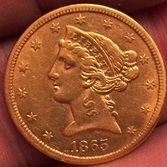
.thumb.jpg.8761b3d9b3da119b9e6d1912f67275ad.jpg)
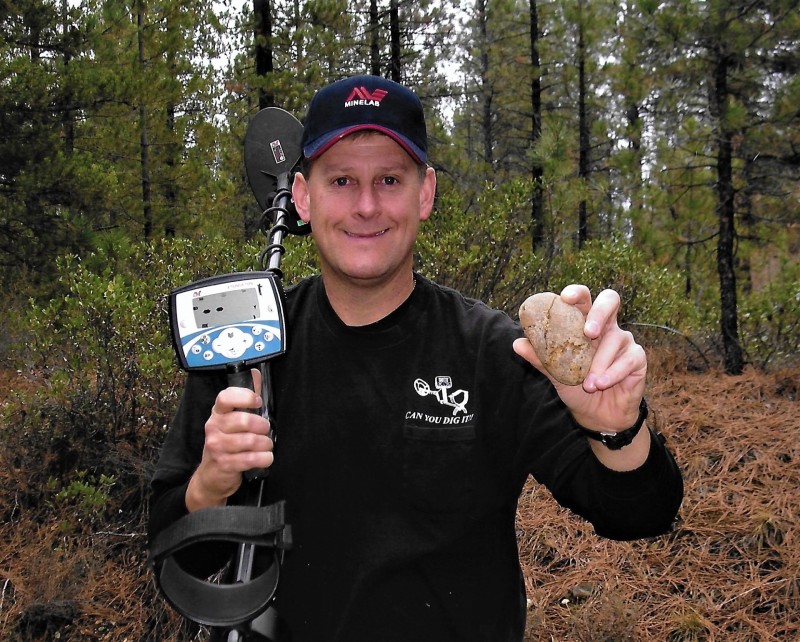
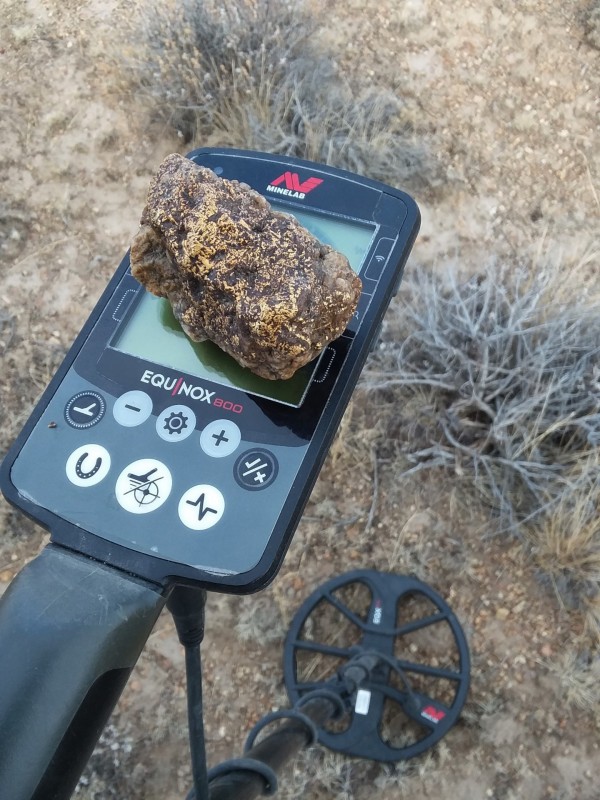
(1).thumb.png.8e7a6cc7820a86cd4539952816693441.png)
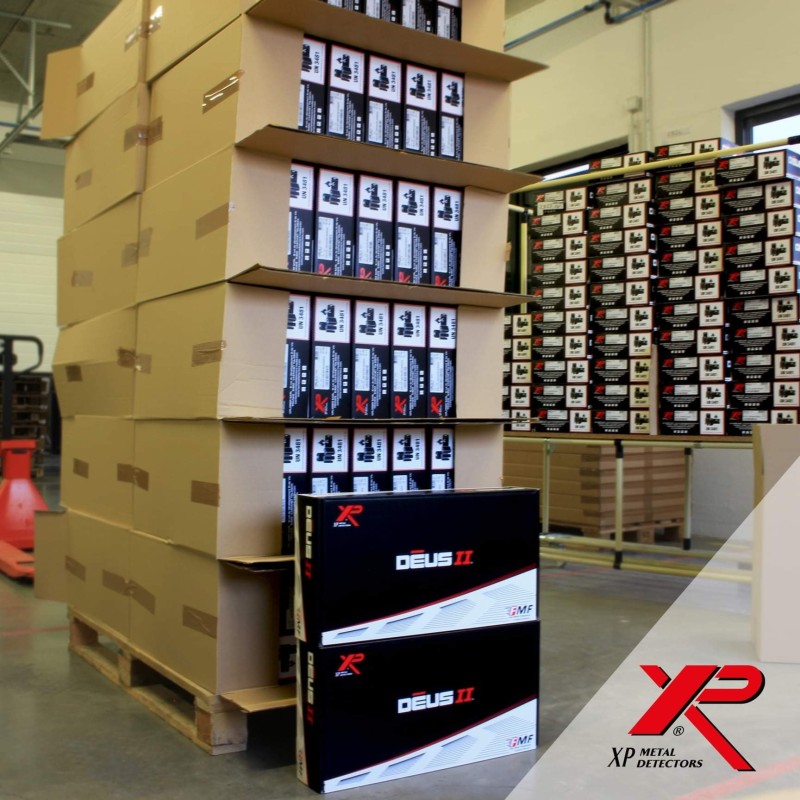
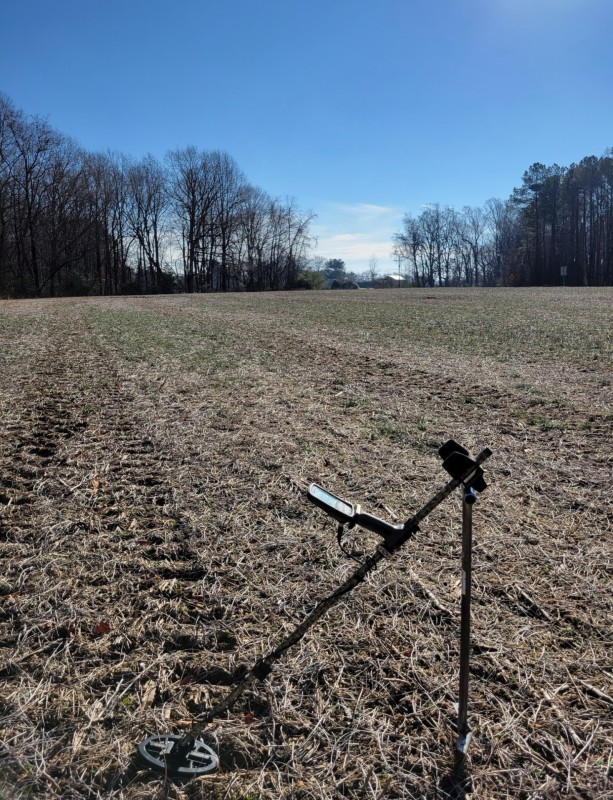
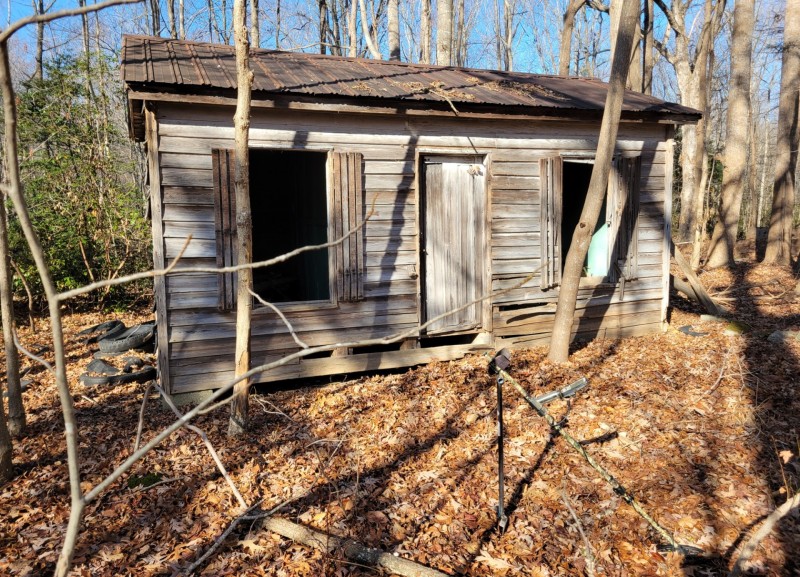
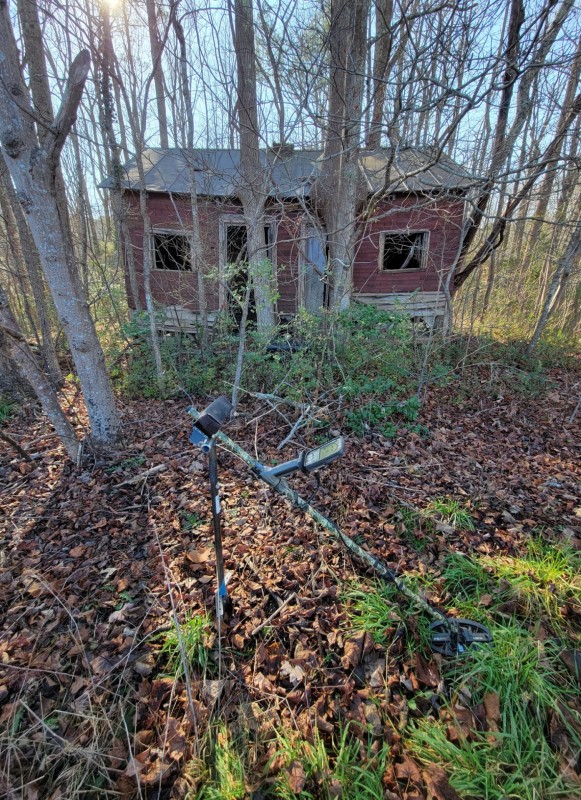
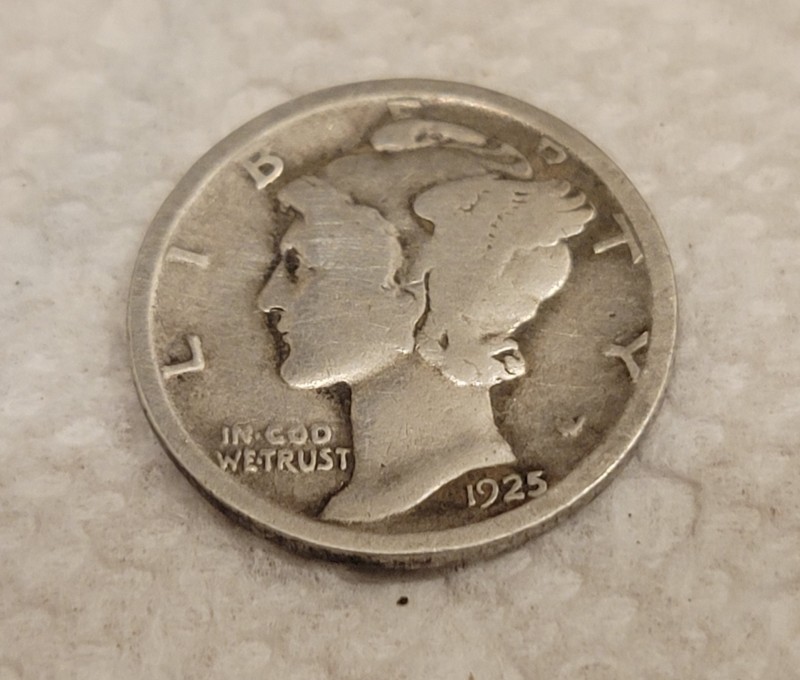
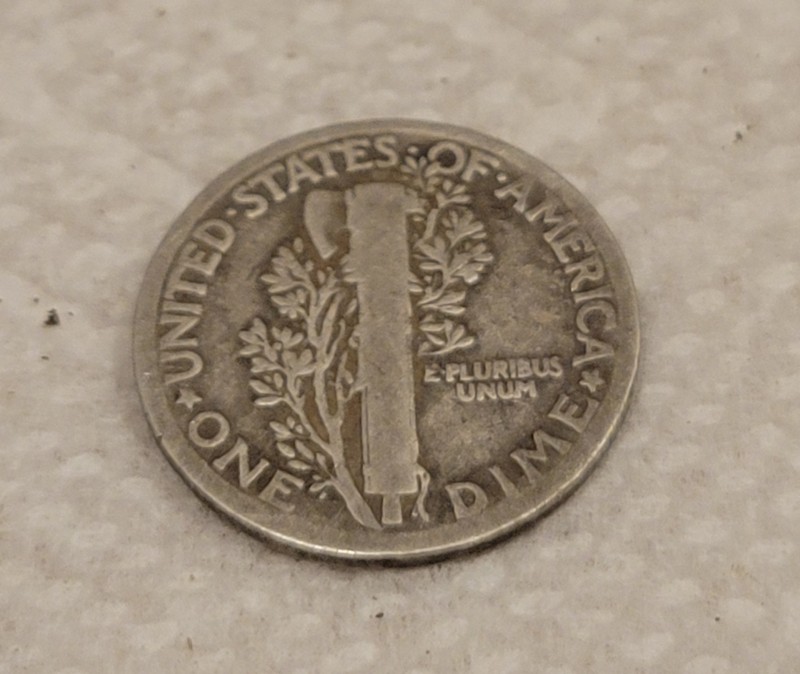
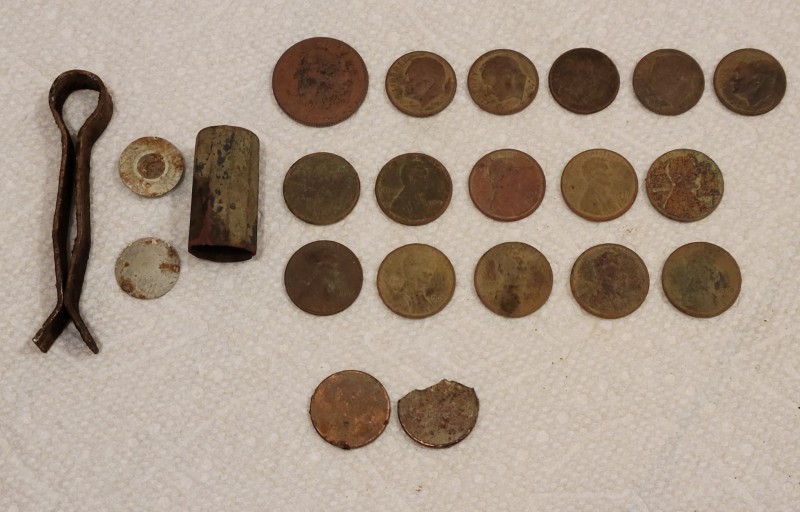
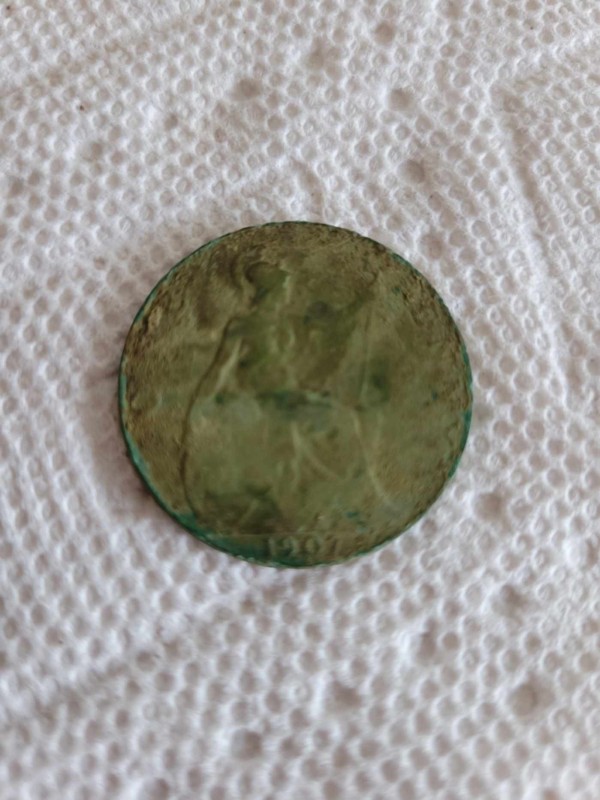
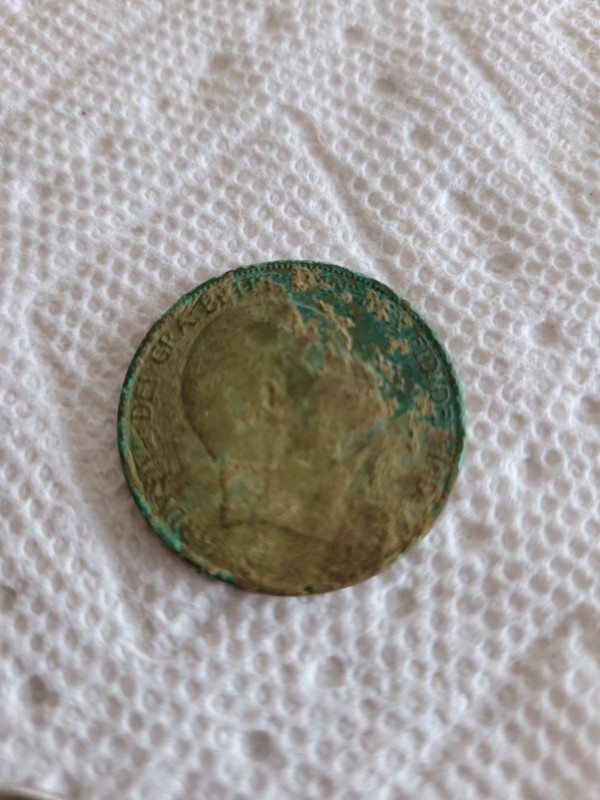
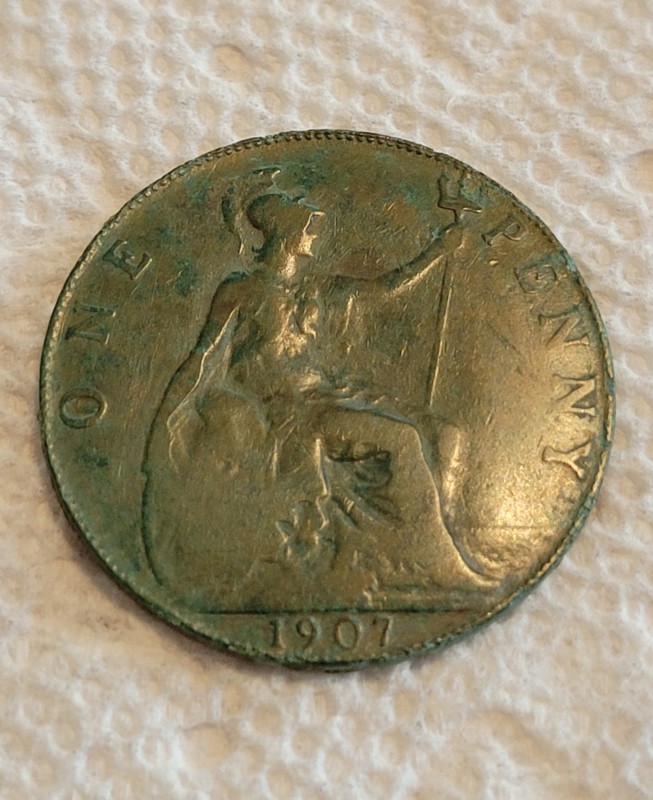
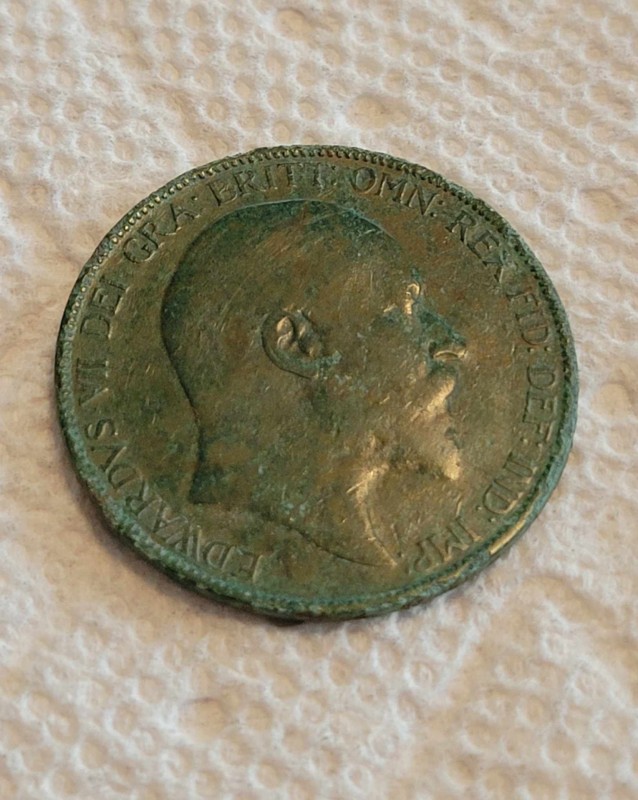

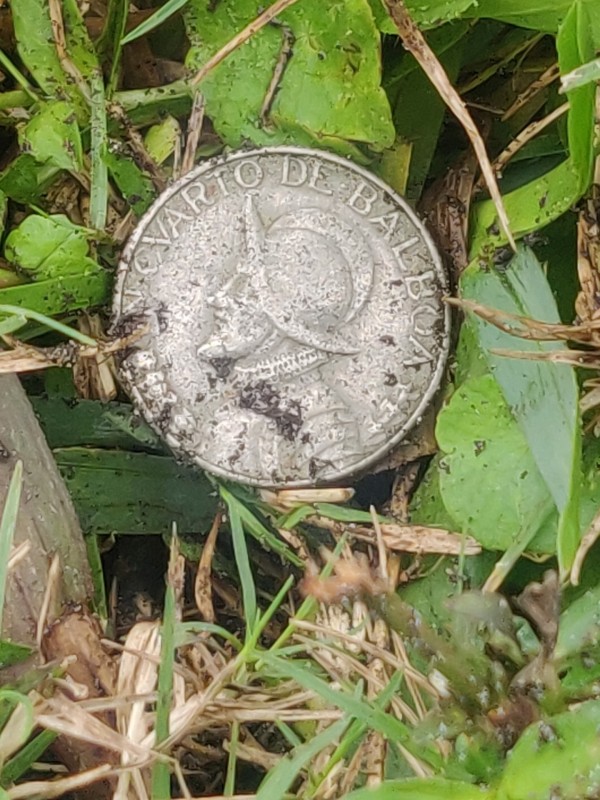
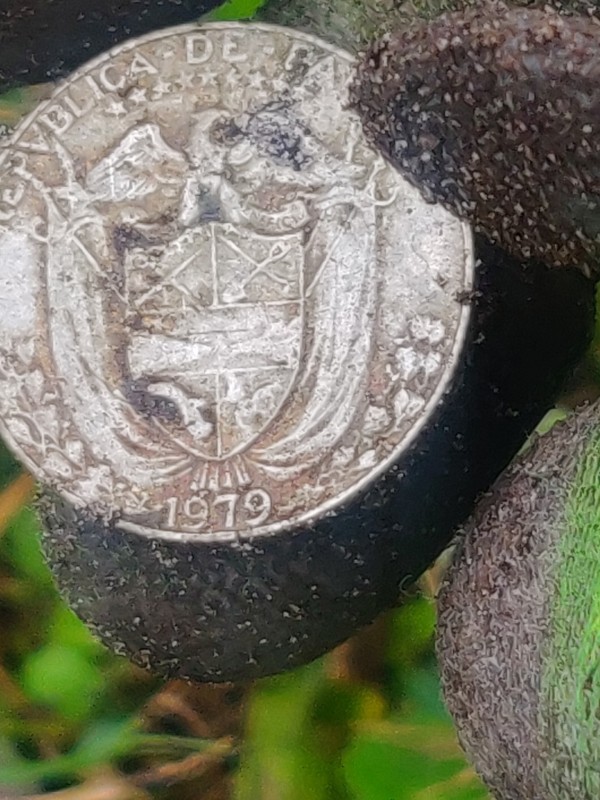
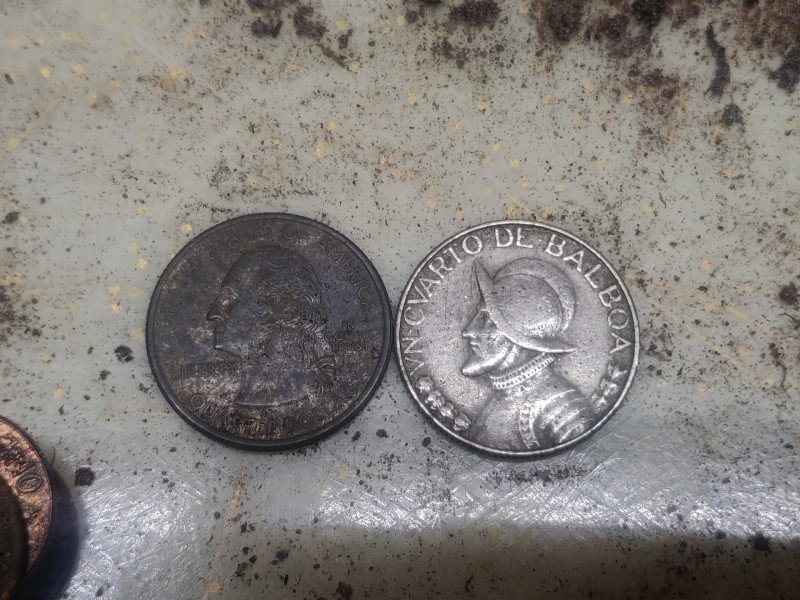
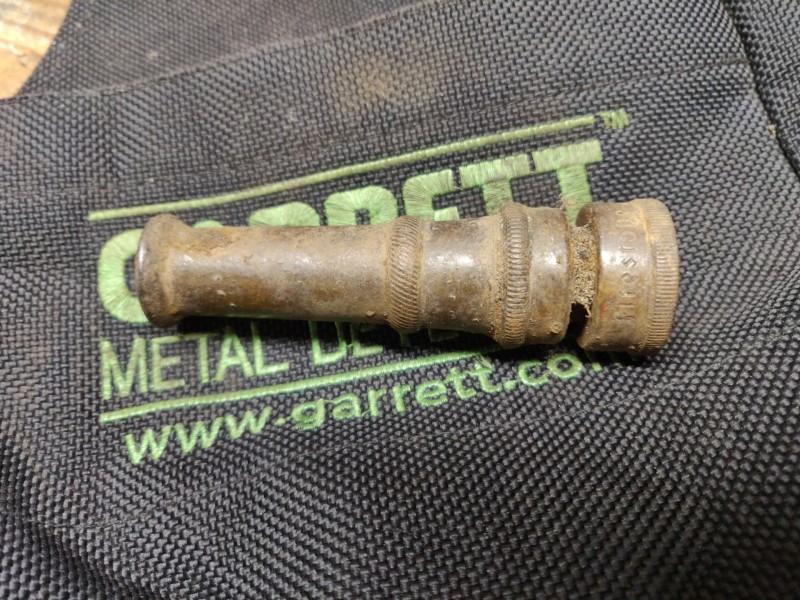
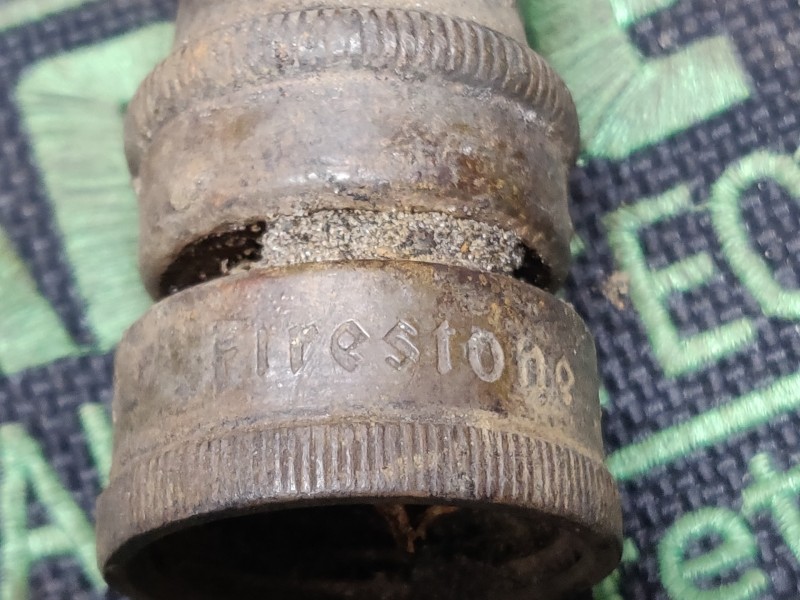
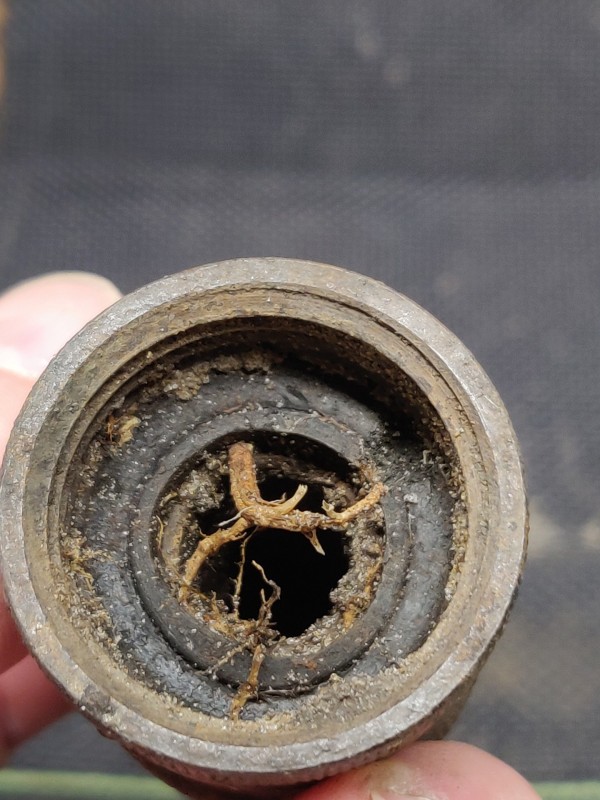
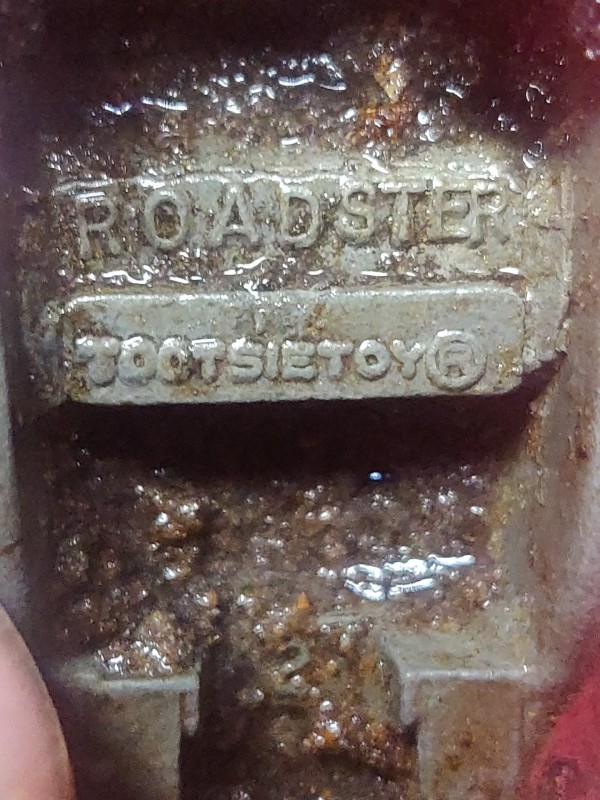

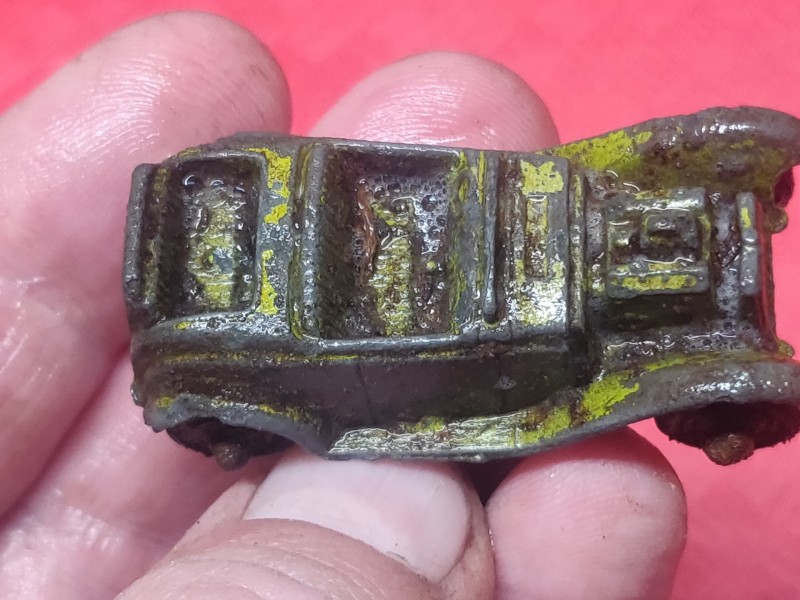
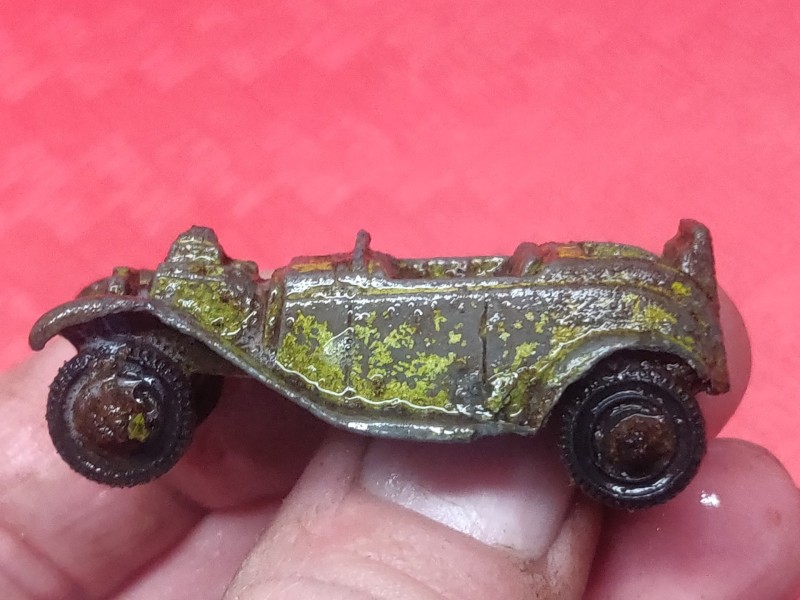
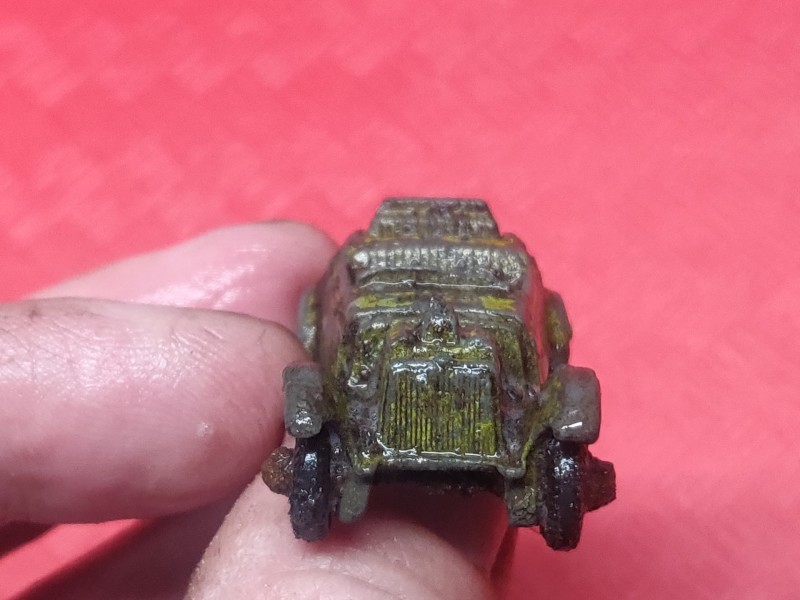
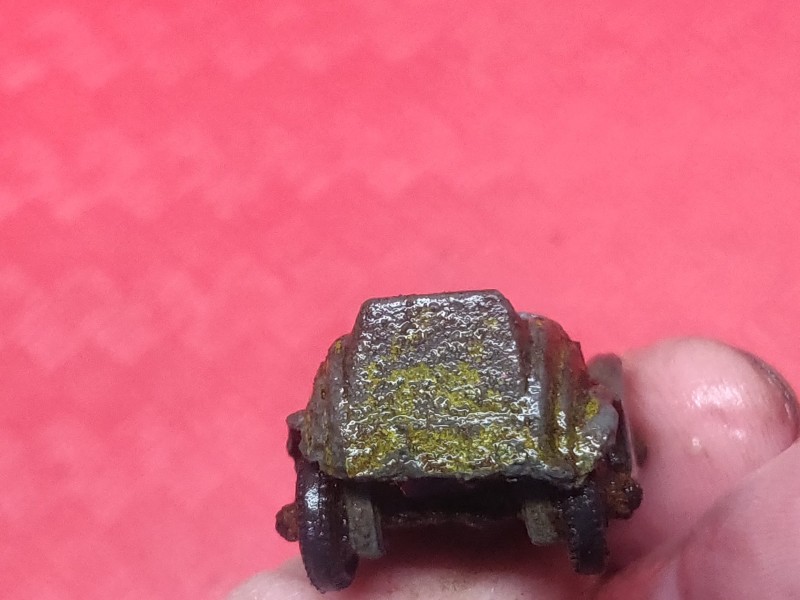
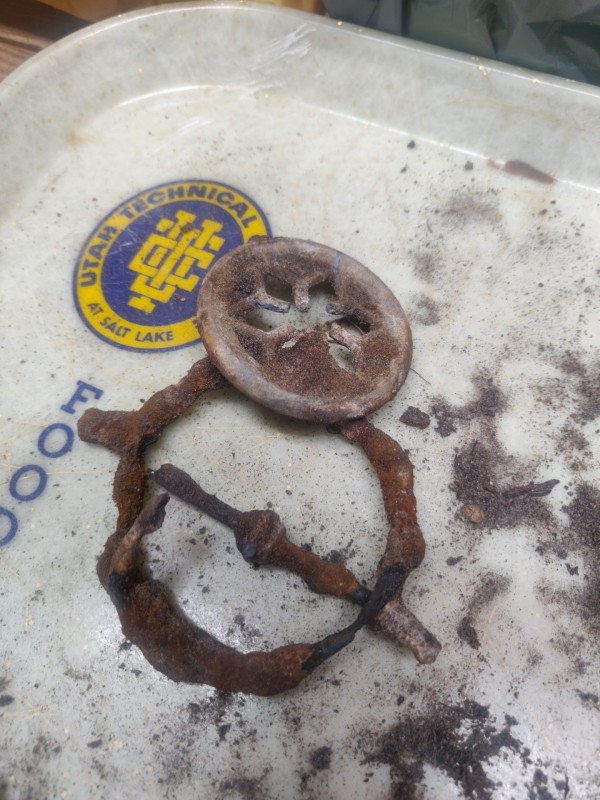
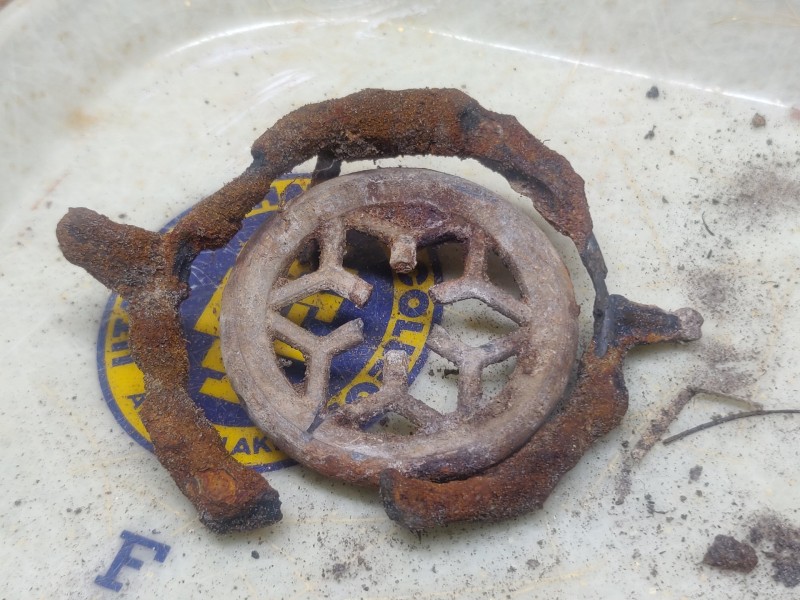
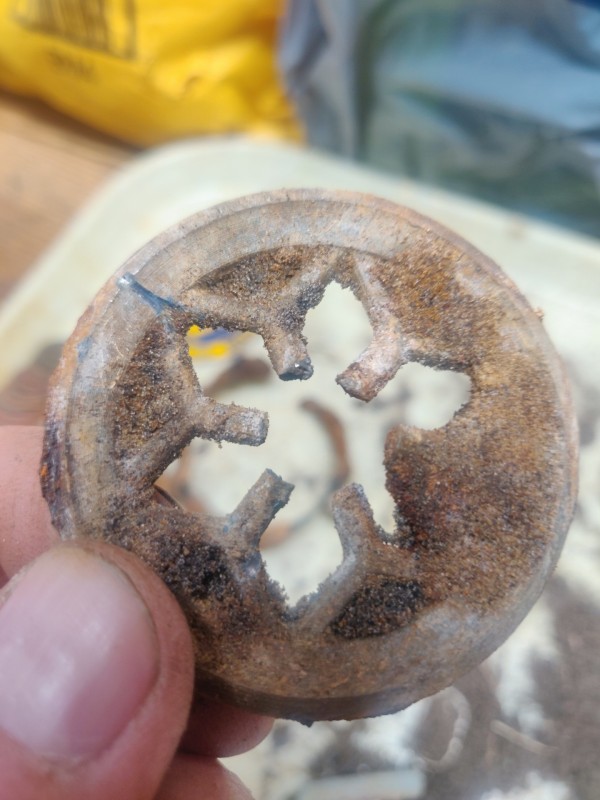
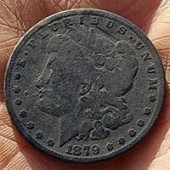
.thumb.jpg.008984156b596a0063f90b0d7fbc295b.jpg)

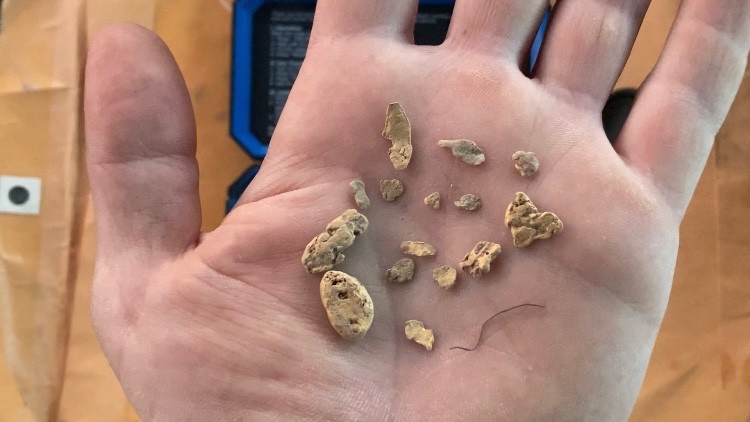

.thumb.jpg.d71314a45f3dc82bf75ac1b96e7e9201.jpg)
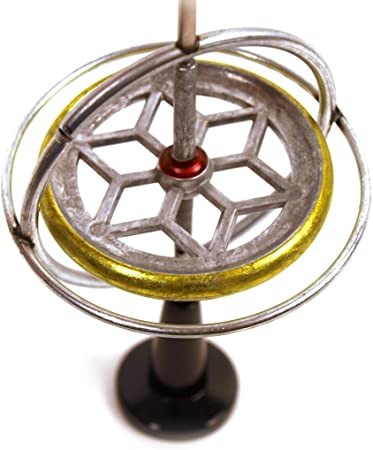

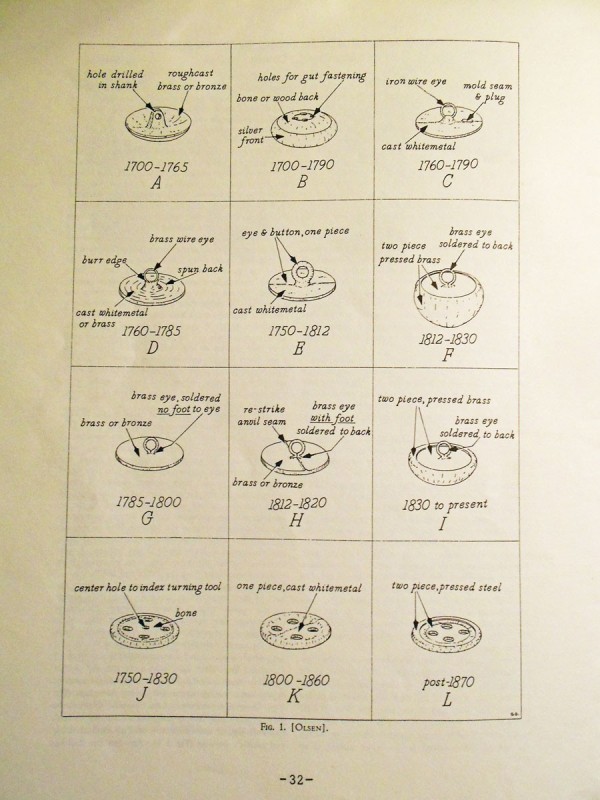
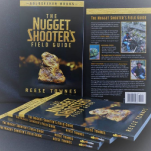
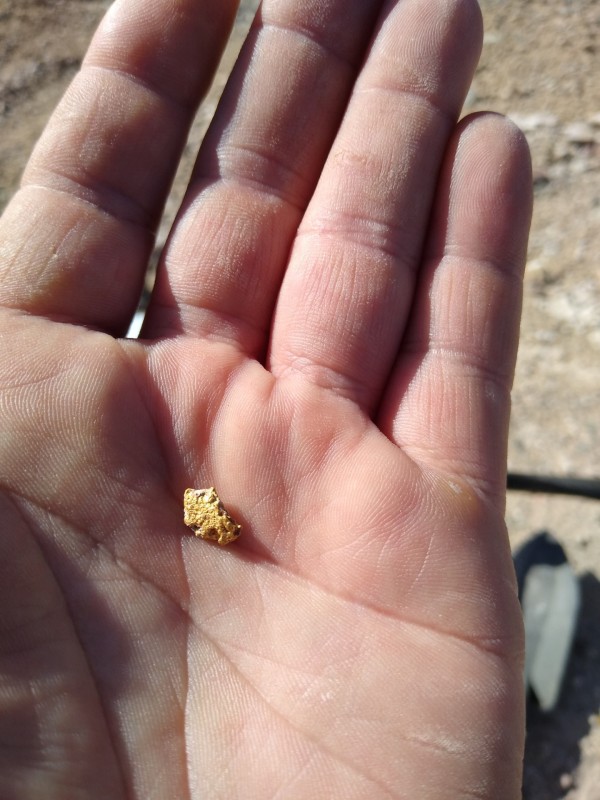
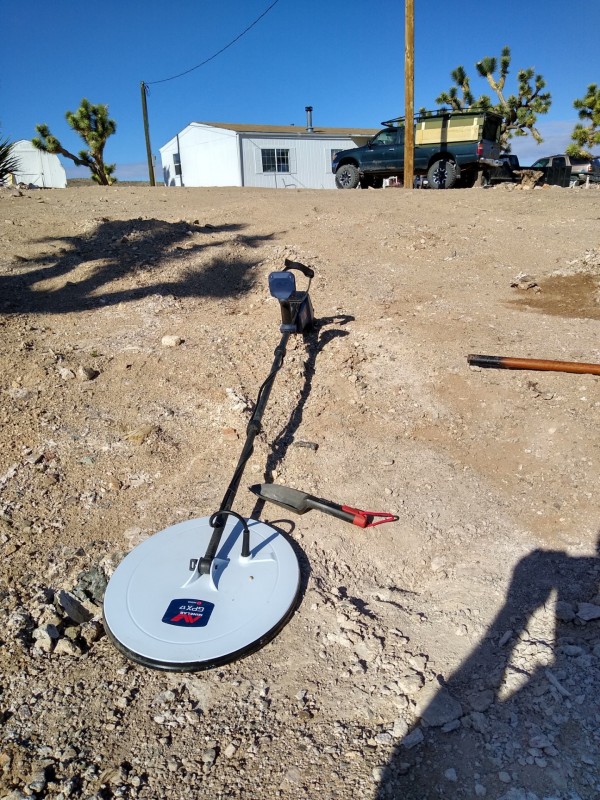
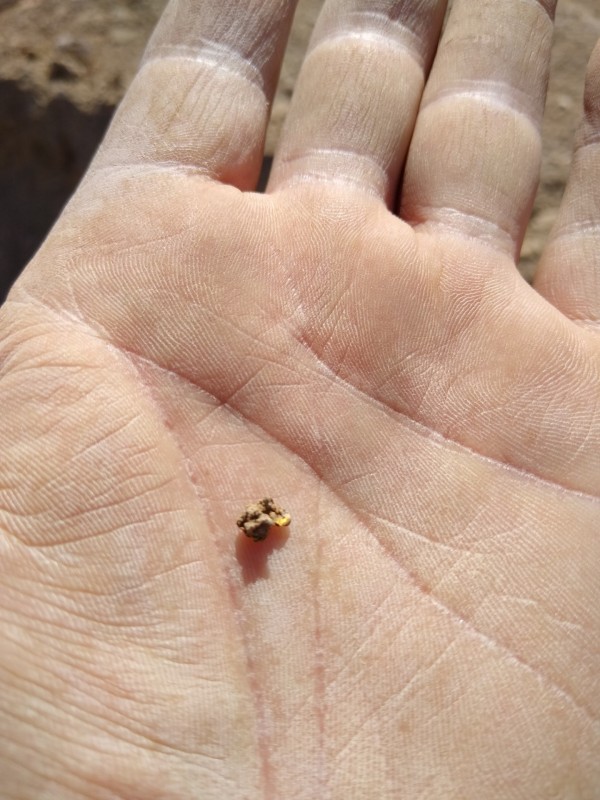
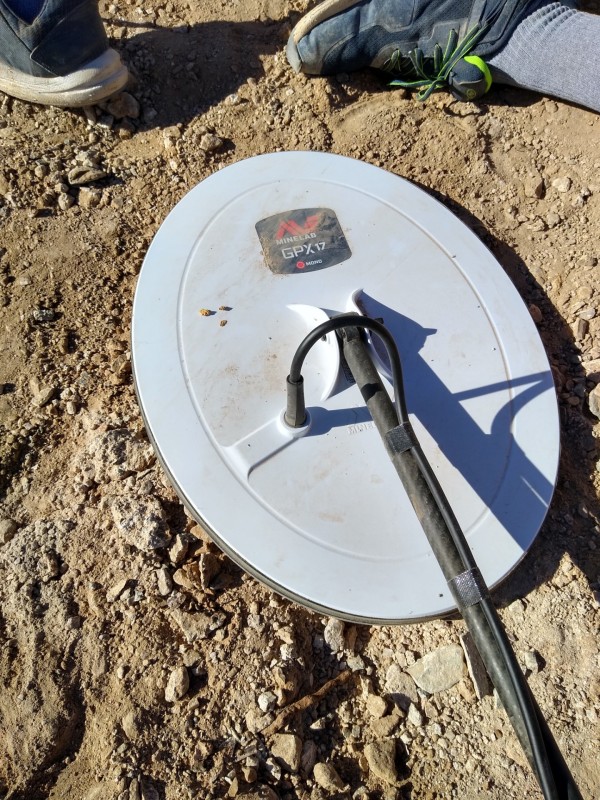
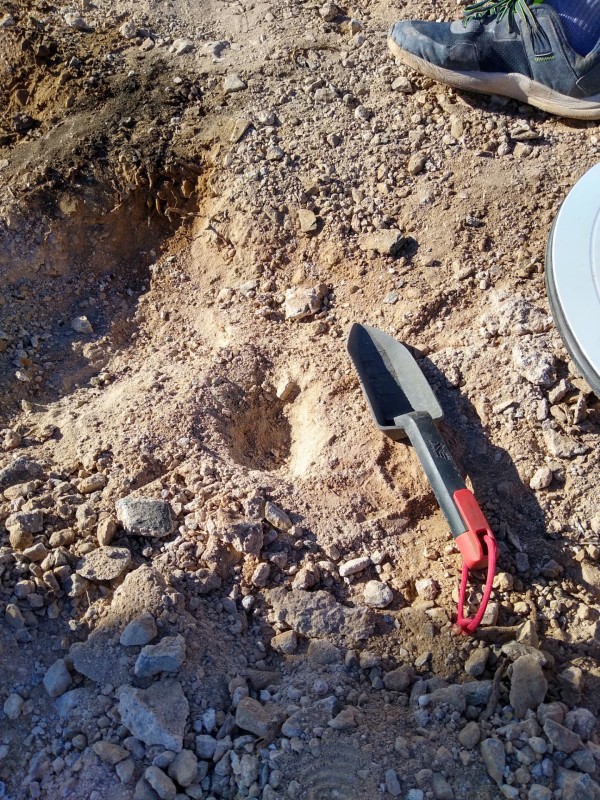
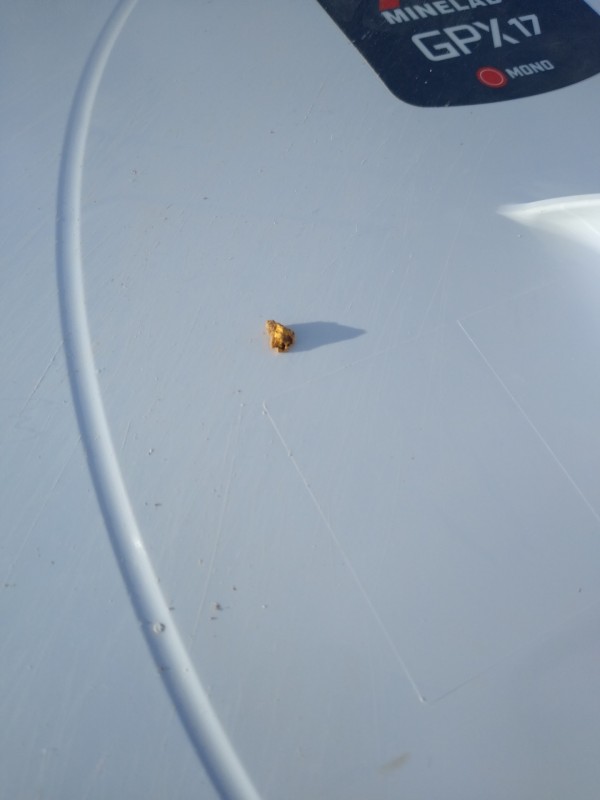
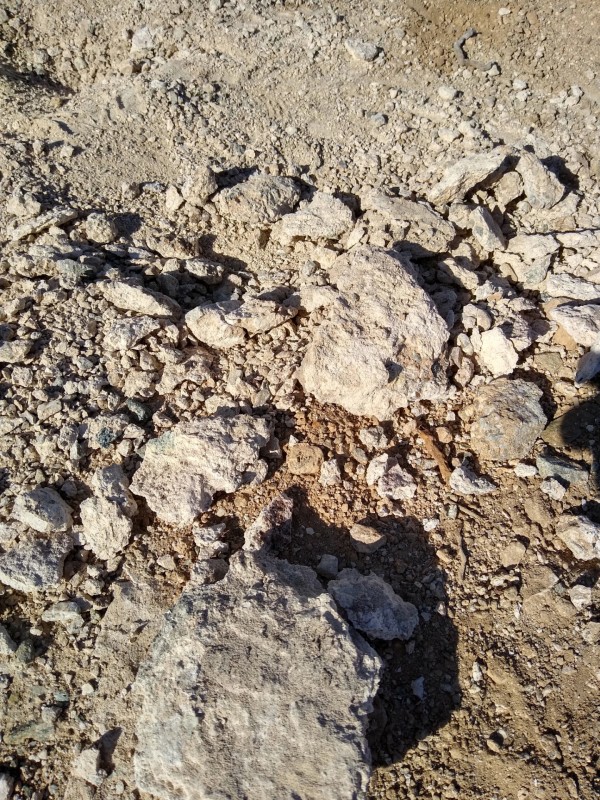
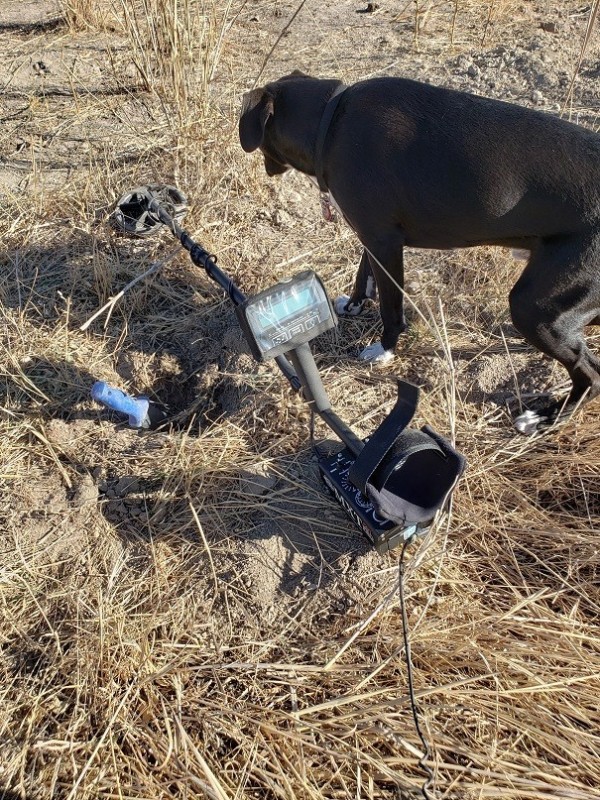
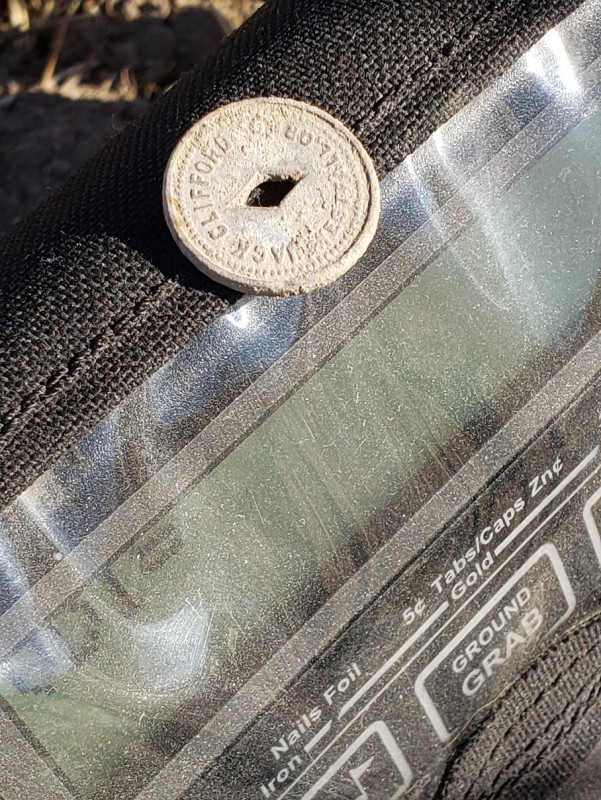
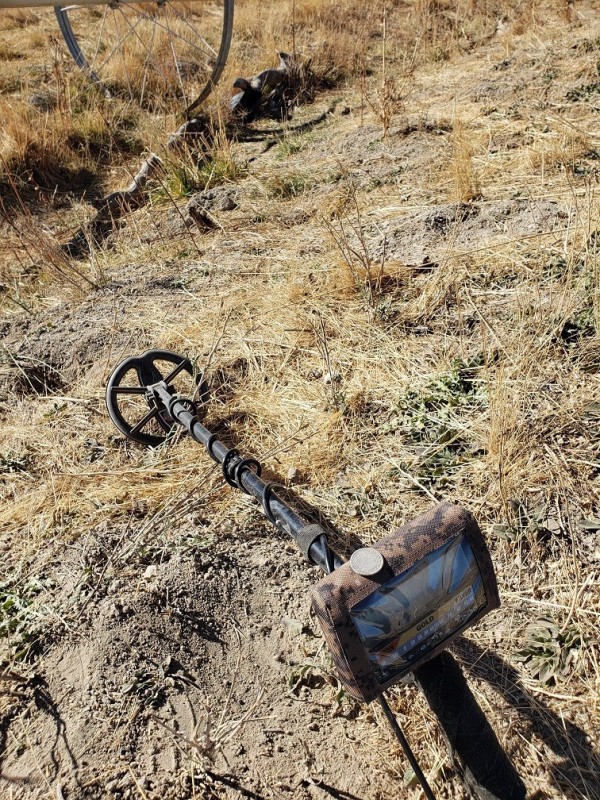
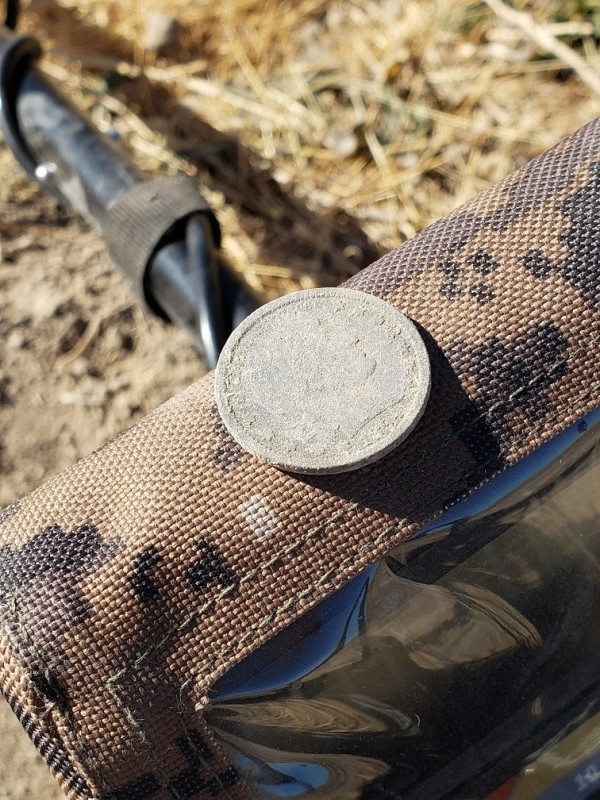
.thumb.jpg.95344db3aeef0a4c6c73420daa366191.jpg)


